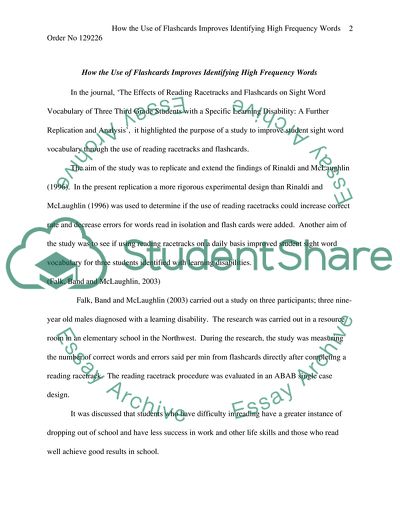Cite this document
(Usage of Flashcards in Identifying High-Frequency Words Article Example | Topics and Well Written Essays - 1500 words, n.d.)
Usage of Flashcards in Identifying High-Frequency Words Article Example | Topics and Well Written Essays - 1500 words. https://studentshare.org/education/1704516-how-the-use-of-flashcards-improves-identifing-high-frequency-words
Usage of Flashcards in Identifying High-Frequency Words Article Example | Topics and Well Written Essays - 1500 words. https://studentshare.org/education/1704516-how-the-use-of-flashcards-improves-identifing-high-frequency-words
(Usage of Flashcards in Identifying High-Frequency Words Article Example | Topics and Well Written Essays - 1500 Words)
Usage of Flashcards in Identifying High-Frequency Words Article Example | Topics and Well Written Essays - 1500 Words. https://studentshare.org/education/1704516-how-the-use-of-flashcards-improves-identifing-high-frequency-words.
Usage of Flashcards in Identifying High-Frequency Words Article Example | Topics and Well Written Essays - 1500 Words. https://studentshare.org/education/1704516-how-the-use-of-flashcards-improves-identifing-high-frequency-words.
“Usage of Flashcards in Identifying High-Frequency Words Article Example | Topics and Well Written Essays - 1500 Words”. https://studentshare.org/education/1704516-how-the-use-of-flashcards-improves-identifing-high-frequency-words.


